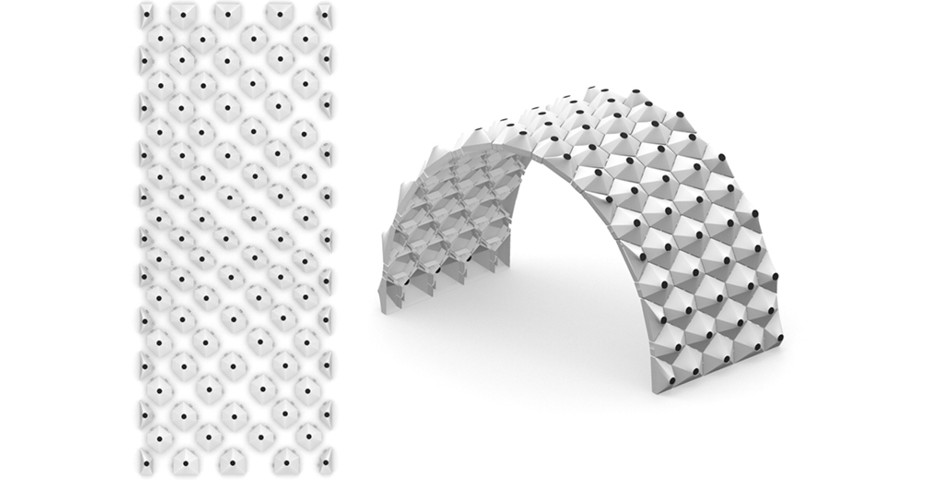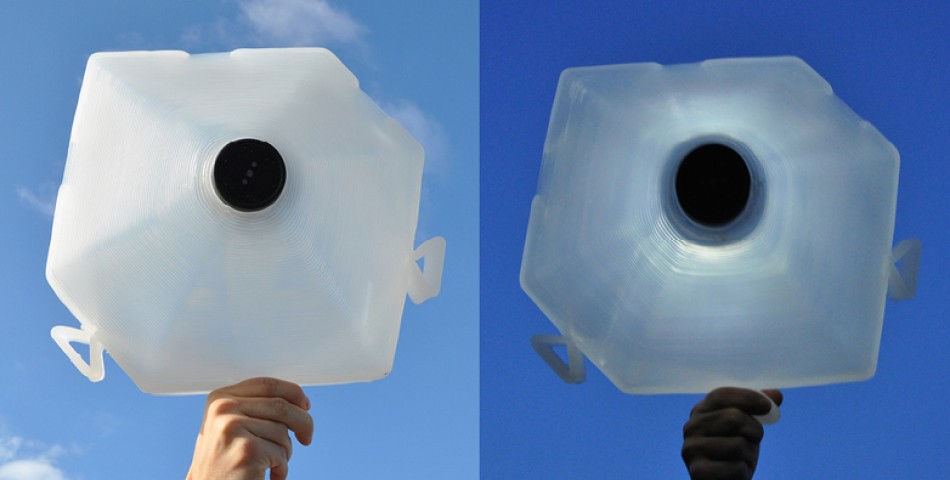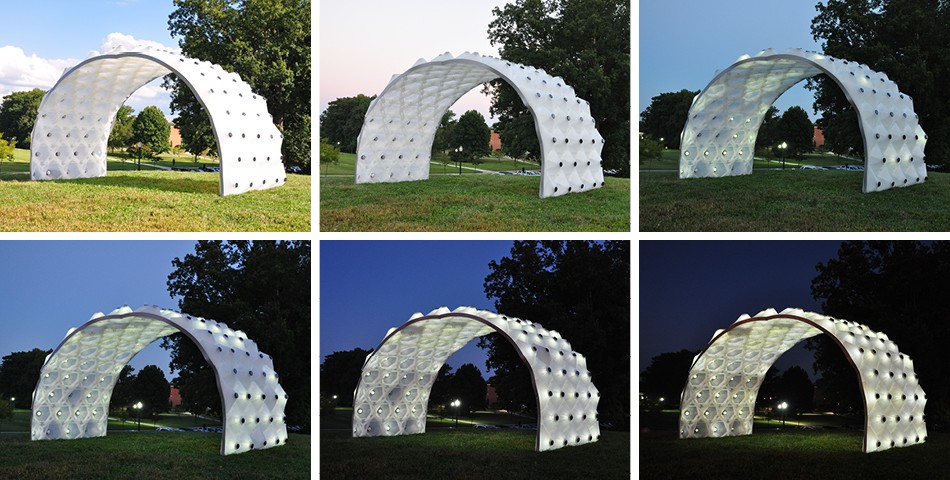Built by Design Lab, an inter-disciplinary design studio based in Kent, Ohio, the Solar Byte Pavilion is an experiment in 3D printed architecture. The Pavilion, made possible by different applications of 3D printing technologies, holds many of the keys to the modular and bespoke construction techniques for building the housing structures of tomorrow.
The experimental structure is composed by modules which were 3D printed using a 6-axis Kuka arm robot in the Robotic Fabrication Lab at the College of Architecture and Environmental Design at Kent State University. The robotic arm – which is also the base for similar construction experiments carried out by the FabLab and IAAC in Barcelona – wields a DOHLE hand welding extruder, the Mini CS, using it as a de-facto 3D print head for an FDM/FFF-type process.
The machine was used to create 94 unique modules or bytes, intended as digitally designed and fabricated building blocks. This modular approach is similar to that used by Emerging Objects, another experimental design studio based in California, only with a different technology. Each module has an integrated solar-powered LED allowing the pavilion to charge during the day and glow at night.
The structure is made of a translucent plastic material which enables it to filter the sunlight in daytime and create a uniform glow at nighttime. This light effect is enhanced by the use of interlocking snap-fit joints that reduce the visual division between each module and, at the same time, allows the arch to be self supporting.
The overall concept is to create a structure where each module is capable of providing new functionalities which can make the buildings of tomorrow smarter and more environmentally compatible. The shape of the pavilion itself is made to follow the path of the sun, spanning from east to west, in order to maximize solar exposure during the day. Each solar cell acts independently, capturing and storing the Sun’s energy, while sensing light levels for each LED. During the Ingenuity Fest in Cleveland Ohio, the Pavilion was used as a shading device while sun was beating down and as a beacon after darkness had fallen. The light being released by each module after darkness corresponded to the light captured by that module during the day.
In the future, the system implemented here will be taken even farther. It will be possible to build structures based on 3D printed modules, each with their own specific properties, creating smart houses that can harvest and distribute energy more efficiently. That day the sun will rise over a much more sustainable world.






